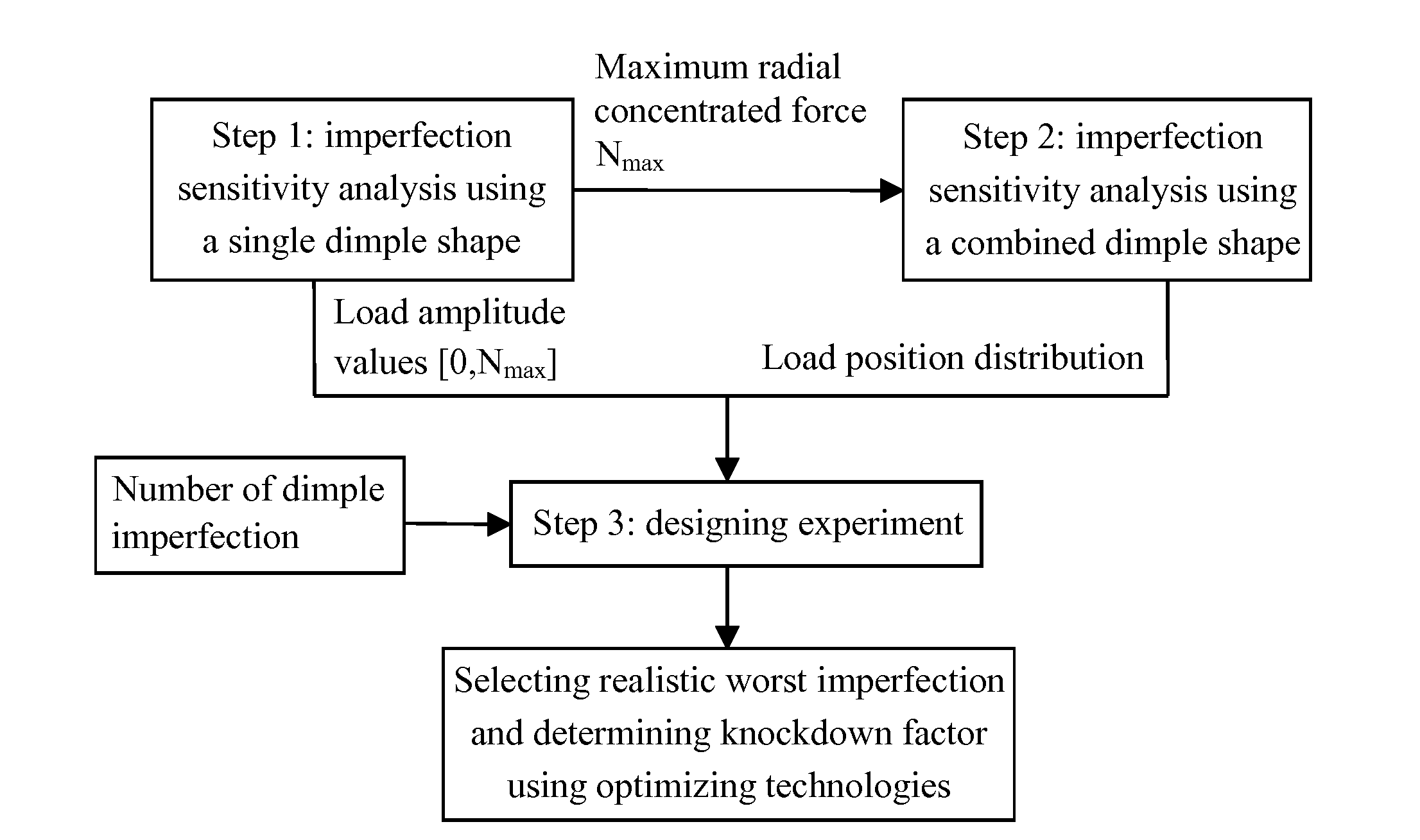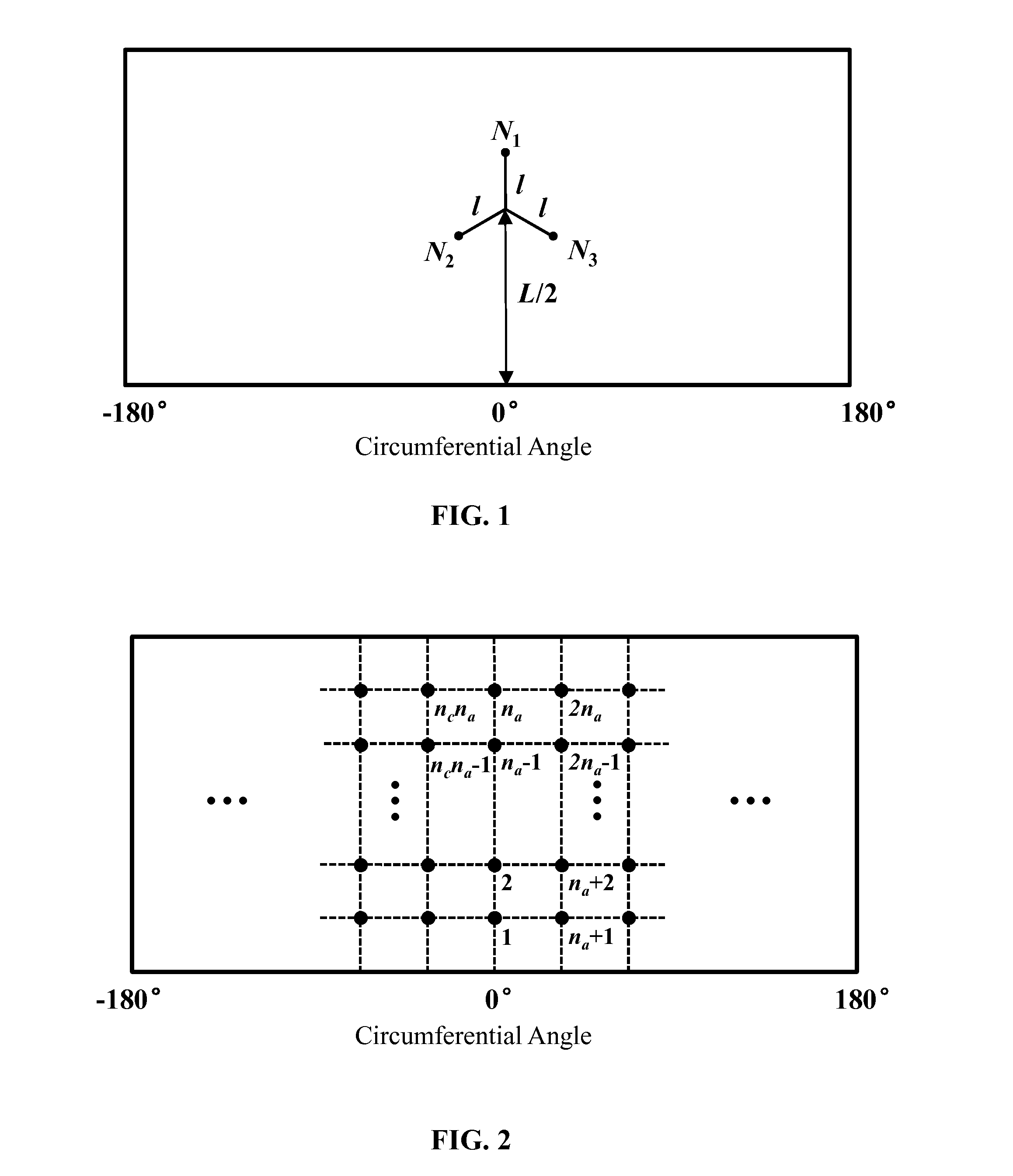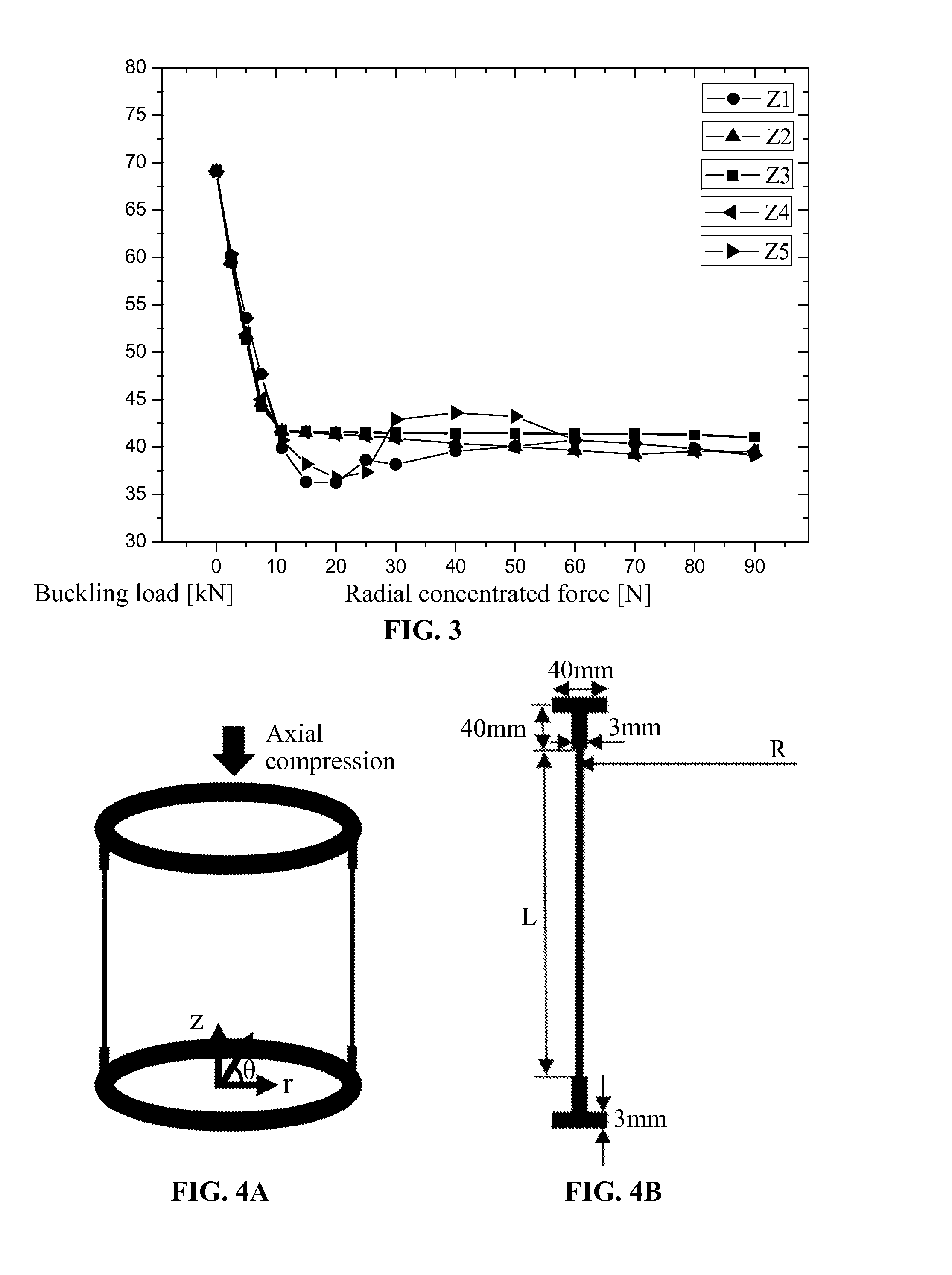Method for determining reduction factor of bearing capacity of axial load cylindrical shell structure
a technology of axial load and bearing capacity, applied in the field of stability analysis, can solve the problems of insufficient physical method of determining the knockdown factor in consideration of the realistic worst imperfections, the actual load-carrying capacity of the structure estimated on the basis of a perfect model theory or data to be much smaller than the actual condition, and the inability to provide a physical method for determining the knockdown factor , to achieve the effect of convenient verification, more physical, and higher fidelity and reliability
- Summary
- Abstract
- Description
- Claims
- Application Information
AI Technical Summary
Benefits of technology
Problems solved by technology
Method used
Image
Examples
example 1
[0052]As shown in FIG. 4, a radius of the metal cylindrical shell R=250 mm, a length L=510 mm, a thickness t=0.5 mm. Material properties of 2024 aluminum alloy are as follows: elastic modulus E=72 GPa, Poisson's ratio ν=0.31, yield stress σs=363 MPa, ultimate stress σb=463 MPa, and density ρ=2.8E−6 kg / mm3. For the convenience of fixing and loading, T-rings are attached to both the bottom end and top end of the cylindrical shell, and made by the same material as the cylindrical shell. The bottom end of the T-rings is entirely clamped and the top end of the T-rings is constrained except for axial translational displacement.
[0053]As shown in FIG. 5, initial imperfections are introduced to the positions that are evenly distributed along the axial direction, and thereby a curve of the perturbation load vs. the buckling load of the structure can be drawn. When the initial imperfection (1.5 mm) is 3 times as thick as the shell skin, the corresponding radial perturbation load Nmax is 30 N. ...
example 2
[0056]As shown in FIG. 10, a radius of a cylindrical shell made by composite materials R=250 mm, a length L=510 mm, a ply angle thereof is [45 / −45 / 45 / −45 / 45] and thickness of each layer t=0.1 mm. Material properties are as follows: E11=84.56 GPa, E22=6.86 GPa, G12=G13=4.9 GPa, G23=1.96 GPa, ν12=0.3, ρ=1.7E−6 kg / mm3. For the convenience of fixing and loading, T-rings which are made by 2024 aluminum alloy are attached to both the bottom end and top end of the cylindrical shell. Material properties of the 2024 aluminum alloy are as follows: elastic modulus E=72 GPa, Poisson's ratio ν=0.31, yield stress σs=363 MPa, ultimate stress σb=463 MPa, and density ρ=2.8E−6 kg / mm3. The bottom end of the T-rings is entirely clamped and the top end of the T-rings is constrained except for axial translational displacement.
[0057]As shown in FIG. 11, initial imperfections are introduced to the positions that are evenly distributed along the axial direction, and thereby a curve of the perturbation load ...
example 3
[0060]As shown in FIG. 16, a radius of the metal cylindrical shell R=300 mm, a length L=600 mm, a thickness t=0.5 mm. Material properties of the 2024 aluminum alloy are as follows: elastic modulus E=72 GPa, Poisson's ratio ν=0.31, yield stress σs=363 MPa, ultimate stress σb=463 MPa, and density ρ=2.8E−6 kg / mm3. For the convenience of fixing and loading, T-rings are attached to both the bottom end and top end of the cylindrical shell, and made by the same material as the cylindrical shell. The bottom end of the T-rings is entirely clamped and the top end of the T-rings is constrained except for axial translational displacement.
[0061]As shown in FIG. 17, initial imperfections are introduced to the positions that are evenly distributed along the axial direction, and thereby a curve of the perturbation load vs. the buckling load of the structure can be drawn, as shown in FIG. 18. Assuming that the initial imperfection (1.5 mm) is 3 times as thick as the shell skin, the corresponding rad...
PUM
 Login to View More
Login to View More Abstract
Description
Claims
Application Information
 Login to View More
Login to View More - R&D
- Intellectual Property
- Life Sciences
- Materials
- Tech Scout
- Unparalleled Data Quality
- Higher Quality Content
- 60% Fewer Hallucinations
Browse by: Latest US Patents, China's latest patents, Technical Efficacy Thesaurus, Application Domain, Technology Topic, Popular Technical Reports.
© 2025 PatSnap. All rights reserved.Legal|Privacy policy|Modern Slavery Act Transparency Statement|Sitemap|About US| Contact US: help@patsnap.com



